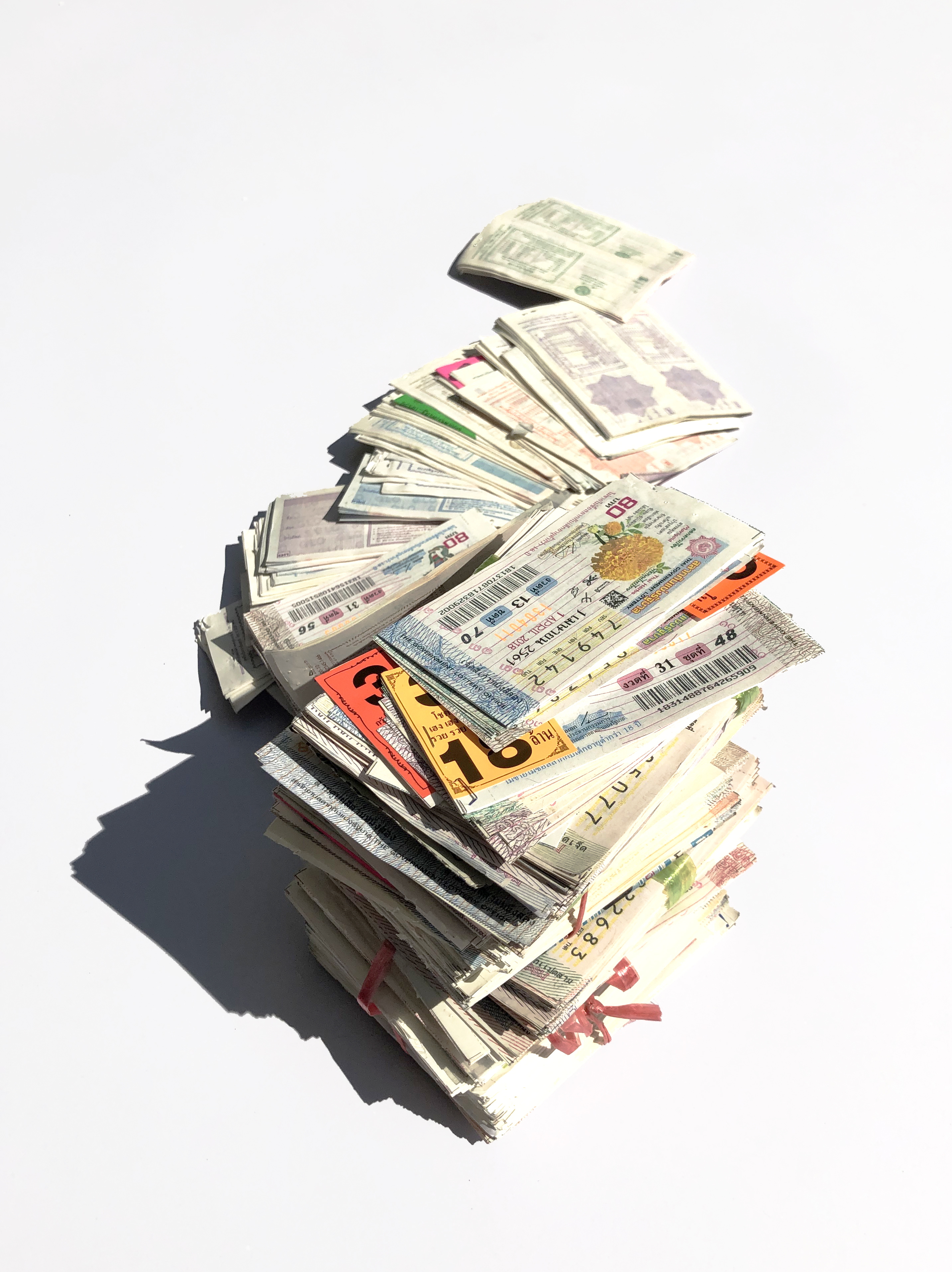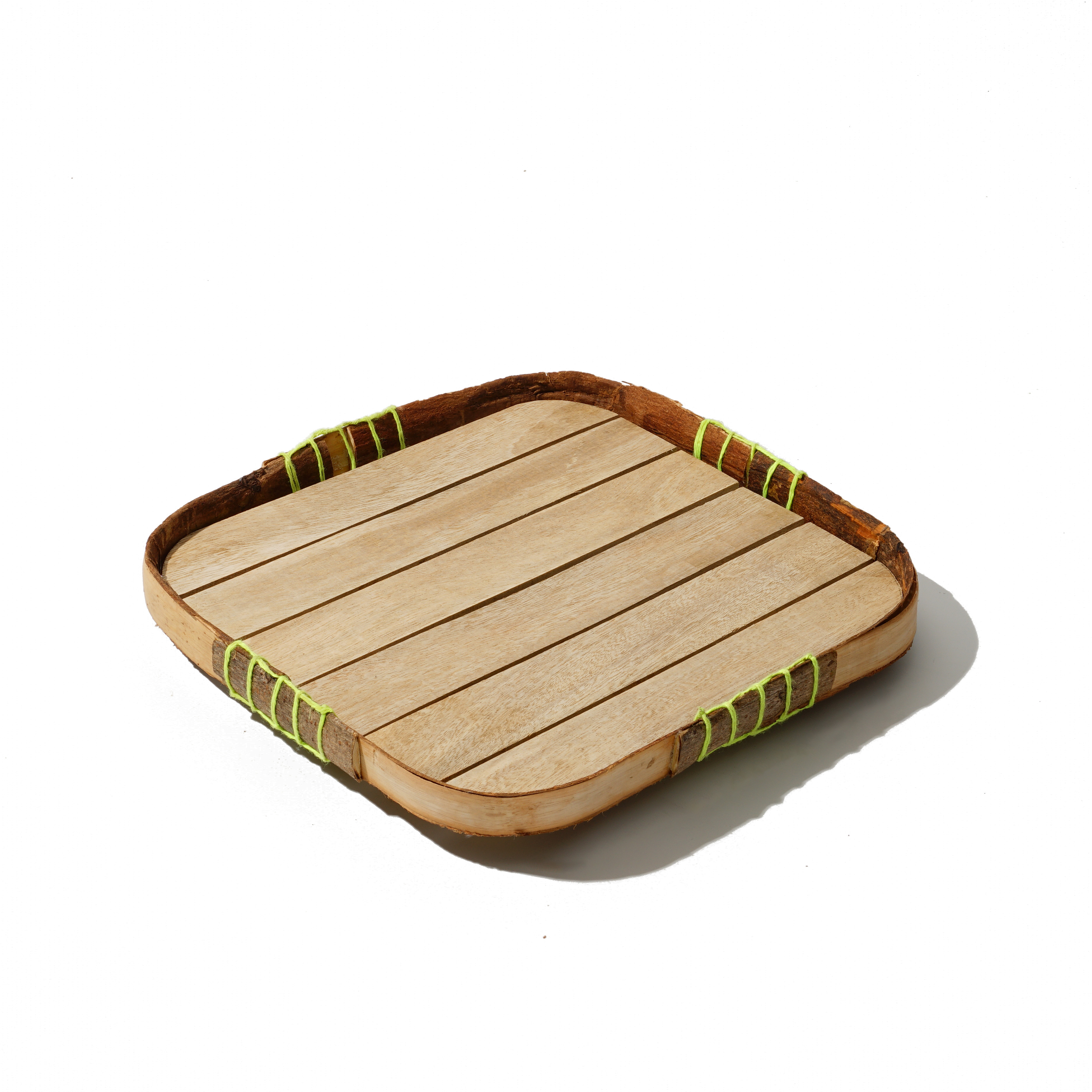
City Material
City material project takes participants on a journey exploring familiar Bangkok, which, over more than 200 years since its establishment, has become home to one of the most culturally diverse populations, and a dynamic and fast-changing metropolis in the world. One of THINKK Together’s key interests is that Bangkok has a wide assortment of familiar materials that constantly pose new challenges to designers, and, therefore, the collaborations within the framework of the project will help determine problem-solving methods and identify opportunities brought by the diversity of materials available in Bangkok.
Materials selected to be part of the project, ranging from coffee ground, urban tree, plastic bag, incense stick, lottery ticket and construction waste, are the materials created in the urban context of Bangkok, whether it be the emergence of new cafés, the popularization of Wai-Phra culture (paying respect to Lord Buddha in religious places), woodlands in the city. Not only does each material represent Bangkok’s identity, but they also are potential materials that can be further developed to create new materials.
Project and Exhibition by THINKK studio
Co-created and Coordinated by Nuttiya Ratchtrachenchai,Apisara Hophaisarn ,Siriluk Muengngam
Photography by Pisit Phanomupatham
City material project takes participants on a journey exploring familiar Bangkok, which, over more than 200 years since its establishment, has become home to one of the most culturally diverse populations, and a dynamic and fast-changing metropolis in the world. One of THINKK Together’s key interests is that Bangkok has a wide assortment of familiar materials that constantly pose new challenges to designers, and, therefore, the collaborations within the framework of the project will help determine problem-solving methods and identify opportunities brought by the diversity of materials available in Bangkok.
Materials selected to be part of the project, ranging from coffee ground, urban tree, plastic bag, incense stick, lottery ticket and construction waste, are the materials created in the urban context of Bangkok, whether it be the emergence of new cafés, the popularization of Wai-Phra culture (paying respect to Lord Buddha in religious places), woodlands in the city. Not only does each material represent Bangkok’s identity, but they also are potential materials that can be further developed to create new materials.
Project and Exhibition by THINKK studio
Co-created and Coordinated by Nuttiya Ratchtrachenchai,Apisara Hophaisarn ,Siriluk Muengngam
Photography by Pisit Phanomupatham













In Thai culture, playing the lottery is deeply ingrained, with a quarter of the population participating. The 1st and 16th of each month are seen as times for "testing one's courage and willingness." However, lottery tickets are often discarded every 15 days. We experiment with various methods to transform lottery tickets, creating diverse possibilities for fun items, all the way to everyday use.
Designed and Experimented by
Varalee Peesiri
Apisara Hophaisarn
Designed and Experimented by
Varalee Peesiri
Apisara Hophaisarn











In Bangkok, trees on footpaths are often extensively pruned by governmental entities in each district. They collect scraps and fallen leaves for fertilizer, with some scraps repurposed into office furniture. However, there's potential to further develop a significant amount of leftover scraps into exciting new materials, aiming to create various possibilities for everyday use.
Designed and Experimented by
Chanya Suoavong
Apisara Hophaisarn
Designed and Experimented by
Chanya Suoavong
Apisara Hophaisarn
